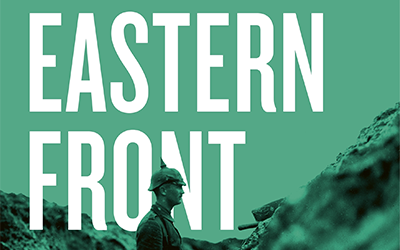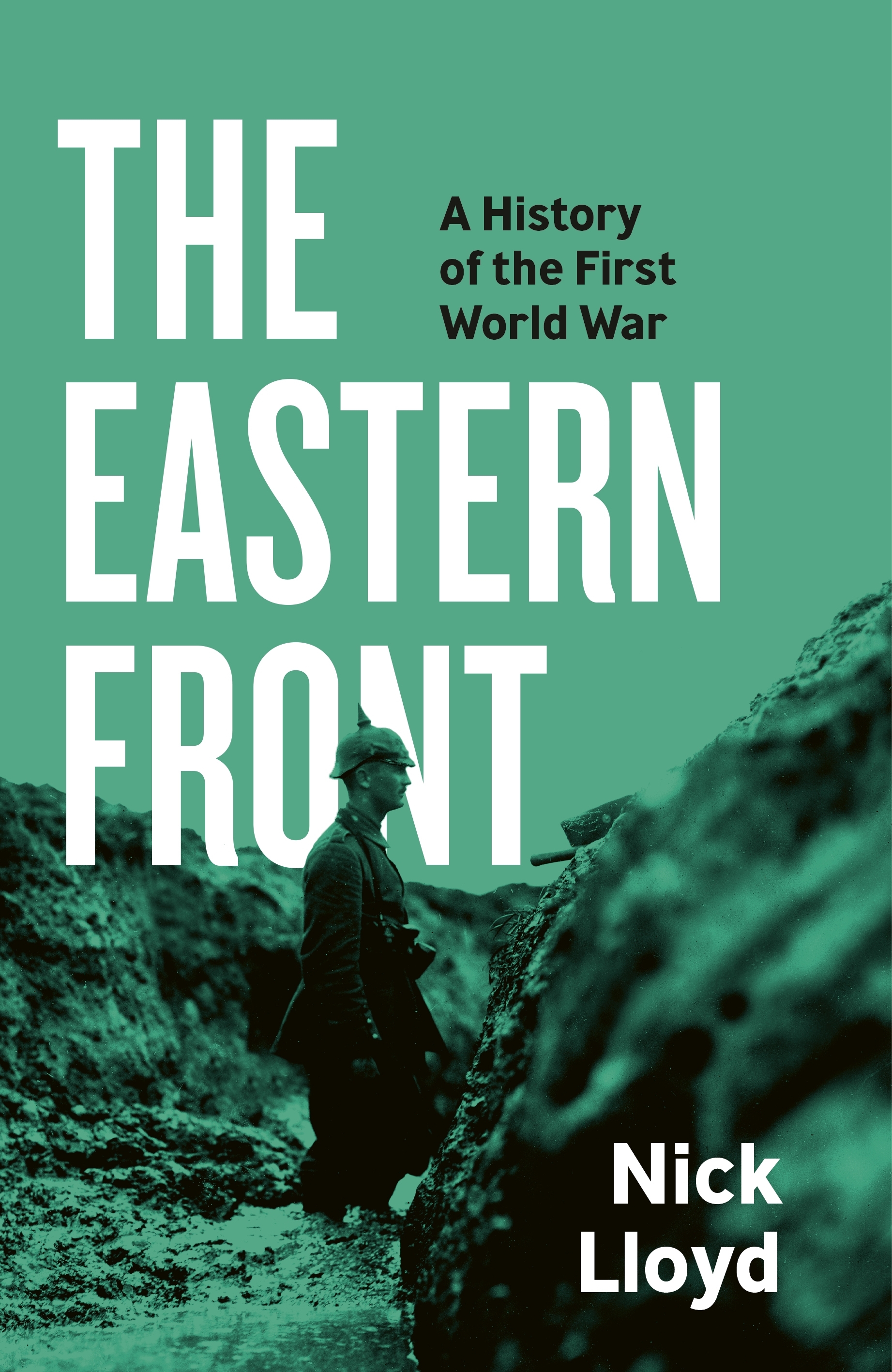
- Free Article: No
- Contents Category: Military History
- Review Article: Yes
- Article Title: Sickening slaughter
- Article Subtitle: A massive and major corrective
- Online Only: No
- Custom Highlight Text:
This is a massive book: 506 pages of text; eighty-nine pages of references and bibliography; seventeen maps, all of them full page or more; and forty-two illustrations. It is also an important book, and it is easy for the reader to follow Nick Lloyd’s argument. The Eastern Front is a major corrective to how most readers here and in the United Kingdom, France, and the United States understand the Great War, as it was once called.
- Featured Image (400px * 250px):

- Alt Tag (Featured Image): Michael McKernan reviews ‘The Eastern Front: A history of the first world war’ by Nick Lloyd
- Book 1 Title: The Eastern Front
- Book 1 Subtitle: A history of the first world war
- Book 1 Biblio: Viking, $65 hb, 672 pp
- Book 1 Cover Small (400 x 600):

- Book 1 Cover (800 x 1200):

Themes from the Western Front are present here too: the suffering of soldiers enduring the worst of the weather; the lack of food; the brutality of barrages that robbed so many of their sanity, temporarily or permanently. Like the Western Front, the Eastern Front saw the weaknesses of so many commanders, with their hatreds and fears of their rivals on their own side, the inability of leaders to understand the war being fought, and the massive death rate among officers, particularly in the first months of the war. Principally, on both Fronts, the main theme is the overwhelming presence of death.
Living in a time of war in Europe and the Middle East, we may respond with more empathy to the sheer evil and horror of warfare depicted in these pages. This is a profoundly anti-war study of war. The carnage was appalling, largely caused by the might of the artillery, which the Germans had in great number, the Russians in lesser number, but still capable of killing large numbers of the enemy. Hundreds of thousands of men from both sides became prisoners of war, though their fate is not spelt out here. Some readers may have liked to know more.
There are, however, problems for readers of The Eastern Front. Few, if any, of the place names will be familiar to many Australian readers, and the maps are not always helpful. If Ypres, Pozières, and Vimy are known to most readers, there is no such familiarity with many of the other places named in the book.
Nor will there be instant recognition of the main characters, excepting the leaders of the Russian Revolution. Most of those who read military history have a sense of Douglas Haig, John Monash, Ian Hamilton, William Birdwood, even Herbert Plumer, but almost every other name in this book will be unfamiliar. This meant, for this reader anyway, that I was constantly asking myself, ‘Now hang on, which side was he on?’ It took many pages before I began to feel comfortable with the names. Readers may need to keep a crib sheet by their side to prompt understanding.
Nick Lloyd, a skilled historian and author, must have been aware of this issue, unless his publisher drew his attention to it, for there is an eleven-page ‘Cast of Characters’ at the back of the book. It is a straightforward listing of the appointments each person received: ‘Chief of General Staff’, ‘Deputy Chief of General Staff’, ‘taking charge of the Eighth Army in November 1914’ – that kind of thing. Lloyd makes no attempt to offer vignettes of men’s characters or foibles.
When the Americans entered the war on the Western Front in 1918, it changed the equation because of the massive increase, on the Allies’ side, of the number of troops involved. But the tsarist army, with an overwhelming advantage in numbers, proved that the equation did not necessarily give the spur to victory that readers might have expected. Take a ‘small engagement’ at Lake Naroch near Vilnius in 1916. ‘The slaughter was sickening,’ Lloyd writes, ‘the attackers fell in piles, with each succeeding wave being hit by the same furious fire and collapsing into little clumps of ragged uniforms and bloodied flesh. In one sector the Germans counted 4,000 Russian bodies, all for the cost of 200 defenders.’ (The Nek on Gallipoli, anyone?) The problem was the appalling Russian leadership.
Look at the figures. In 1916, Russian forces had approximately 670,000 more men than the Germans could field, a figure that grew to almost 880,000 when the latest bunch of recruits joined the fight. Why was this difference not decisive? Largely, Lloyd explains, because of the incompetence of the Russian military and political leadership, led by Tsar Nicholas II, an amiable but flawed leader. It is overwhelmingly poignant to read of such incompetence, which led directly to the loss of untold troops. Eventually, the will to fight evaporated among the ordinary soldiers, leaving Russia ripe for revolution.
Events culminated in the abdication of Tsar Nicholas on 15 March 1917. His Chief of Staff, General Mikhail Alekseev, sent a telegram to all Russia’s military leaders declaring that ‘the army in the field must be saved from disintegration’. All the leaders agreed that the tsar must go. On reading the telegrams in reply at 3 pm that day, Nicholas signed the deed of abdication. Lloyd describes the hopes that the war could continue on a smoother basis as a ‘tragic delusion’: ‘far from dousing the flames of revolution, the abdication had poured kerosene on them’.
The new Russian government surrendered to the Germans at the Treaty of Brest-Litovsk. Their allies struggled thereafter, with the Germans eventually triumphing in a series of victories across the Eastern Front. The victory, so decisive and costly, was short-lived. With the armistice signed on 11 November 1918, covering both fronts, the defeated on the eastern one became the ultimate victors. The map of eastern Europe was redrawn. The Eastern Front had not affected the outcome of the war at all.
However, the war on the Eastern Front had provoked the most consequential change in the twentieth century, utterly reshaping the world order. The detail of the war which Lloyd so marvellously reveals in a deftly composed, fast-paced narrative, offers readers the most comprehensive insight into these momentous events. Most historically literate readers have a good understanding of the Bolshevik revolution, but Lloyd provides the context for these events. Though long, this important book adds a huge dimension to studies of World War I.


Comments powered by CComment